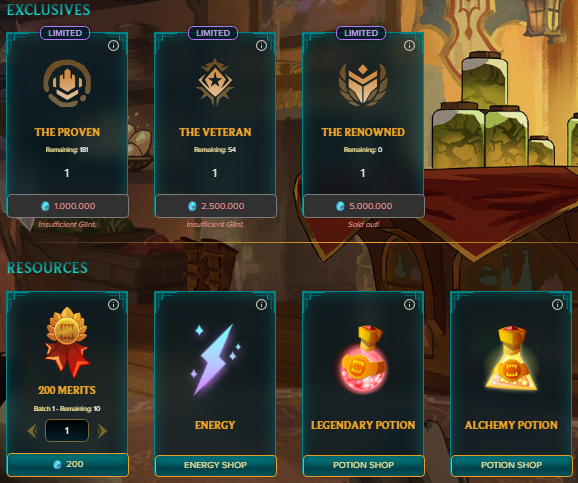The Glint

Splinterlands has recently introduced the GLINT system, which I believe is one of the most effective improvements they've made to enhance both gameplay and competitiveness. As a card game, Splinterlands thrives on keeping players engaged, and this system provides strong incentives for players to compete and earn GLINT. With more players vying for GLINT, the game’s overall activity and community engagement are set to rise, strengthening the game’s ecosystem.

That said, there's a particular aspect of the system that I find less appealing—the linking of cards when you play, which requires paying a DEC fee to “unlock” them if you want to list them on the market. Personally, this is a feature I’m not fond of, and it continues to be a sticking point for me. However, putting that aside, I can appreciate the main aim of the GLINT system.

hough I wouldn’t consider myself a pro player in Splinterlands, I do enjoy playing, and I try to earn around 1,000 GLINT per day if I have the time and can win a reasonable number of matches. Accumulating GLINT effectively, however, requires holding a good amount of SPS, as this impacts the GLINT earned per win. My SPS holdings are modest, which means I’m not maximizing my GLINT earnings in each match. You can see in my screenshot below the current GLINT I earn for a win, which, while not substantial, does add up over time.
To increase my GLINT per battle, I’d recommend that players invest in more SPS if possible or even consider renting it, which can be a practical option for boosting earnings. At present, I don’t recall the total GLINT I’ve accumulated this season, as I’ve been spending some on chest openings, which I find a rewarding experience. Currently, I have enough GLINT saved to open around five Major Chests, which offer higher chances of valuable rewards.

For those looking to maximize their GLINT earnings, selecting the right game mode is crucial. In my case, I prefer the WILD mode due to the older cards I have in my collection, which I still enjoy using and find effective in battle. Playing in a mode that suits your deck can lead to higher overall returns. Additionally, holding more SPS is essential; for those able, acquiring or renting a good amount of SPS is a sound strategy. Personally, I haven’t yet rented SPS, but I’m considering it to make the most out of each game. Joining a guild can also be advantageous as it allows participation in clan battles, rewarding players with both SPS and Merits, which are necessary for Gladius cards.
The GLINT store also adds value to the player experience, offering various items and cards based on their rarity. You can directly purchase cards, with the rarity guaranteed, though the specific card and whether it’s standard or Gold are random. For me, the unpredictability of chests makes them an exciting choice, and the possibility of landing something unique keeps me coming back to open them.
 In terms of daily gameplay, I usually use around 30-35 of the 50 energy charges Splinterlands provides, ensuring I don’t dip too low. Depending on how my win streak is going, this setup allows me to accumulate a decent amount of GLINT, though, as I mentioned, holding more SPS would further enhance my GLINT per game. For newer players, it’s important to first assess how much time they can devote to playing each day, as not everyone has the same availability.
Splinterlands is also quite dynamic; some days may be filled with victories, while others may bring a losing streak. On challenging days, I find it’s often best to take a break and come back later rather than pushing through, which can lead to better performance in the long run.
In terms of daily gameplay, I usually use around 30-35 of the 50 energy charges Splinterlands provides, ensuring I don’t dip too low. Depending on how my win streak is going, this setup allows me to accumulate a decent amount of GLINT, though, as I mentioned, holding more SPS would further enhance my GLINT per game. For newer players, it’s important to first assess how much time they can devote to playing each day, as not everyone has the same availability.
Splinterlands is also quite dynamic; some days may be filled with victories, while others may bring a losing streak. On challenging days, I find it’s often best to take a break and come back later rather than pushing through, which can lead to better performance in the long run.
 😁
😁





 😁
😁




 😁
😁
Congratulations @enolah! You have completed the following achievement on the Hive blockchain And have been rewarded with New badge(s)
Your next target is to reach 600 upvotes.
You can view your badges on your board and compare yourself to others in the Ranking
If you no longer want to receive notifications, reply to this comment with the word
STOPCheck out our last posts:
Thanks for sharing! - @alokkumar121
